Joe Perry on a career in guitars
Six-string memories from the Aerosmith icon
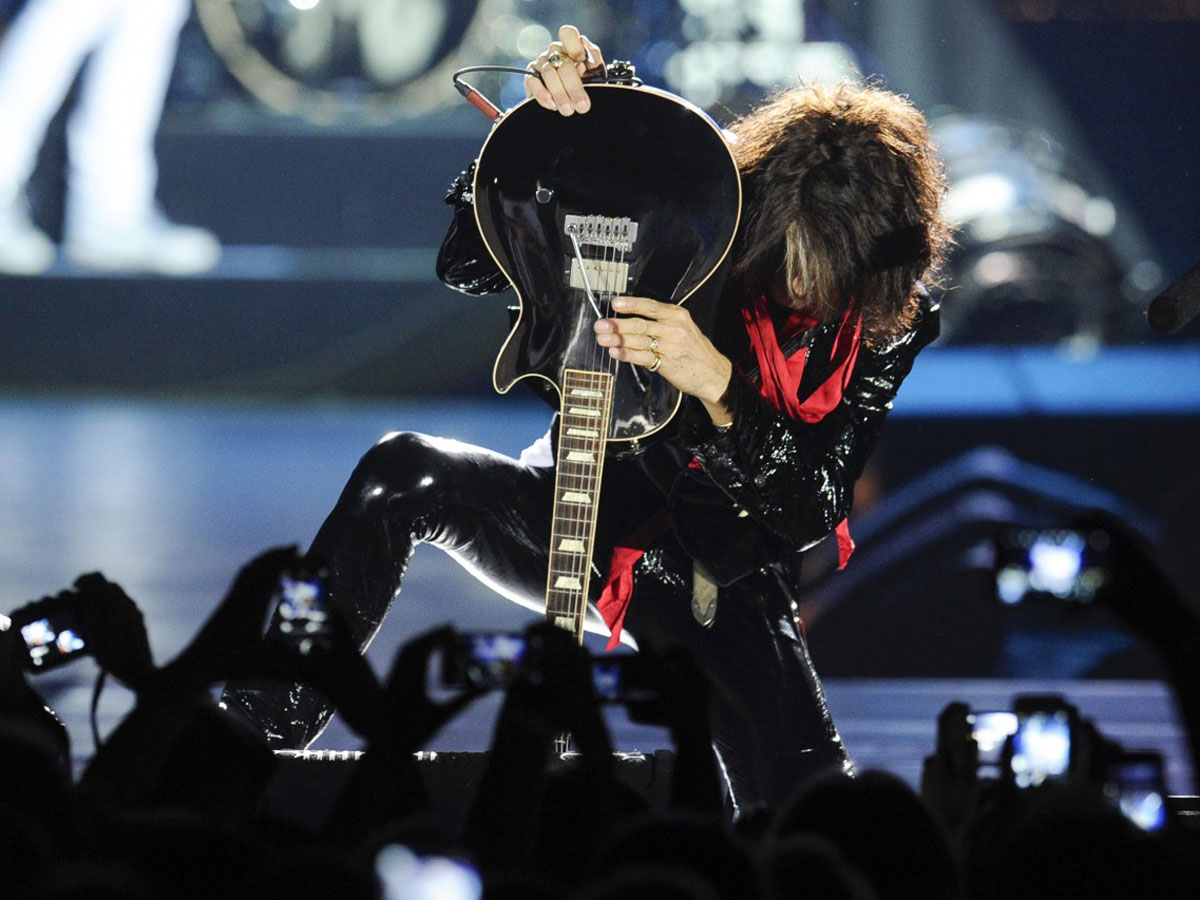
Introduction
Over four decades in the making, Joe Perry’s memoir chronicles the life of a man known for his bluesy riffs and hard living as part of one of America’s most successful groups of all time.
Rocks: My Life In And Out Of Aerosmith offers a no-nonsense look at the rollercoaster ride of his band’s 45-year history. And after surviving the press blitz for Rocks, Perry is more than happy to oblige when we ask to dig into his love of guitars...
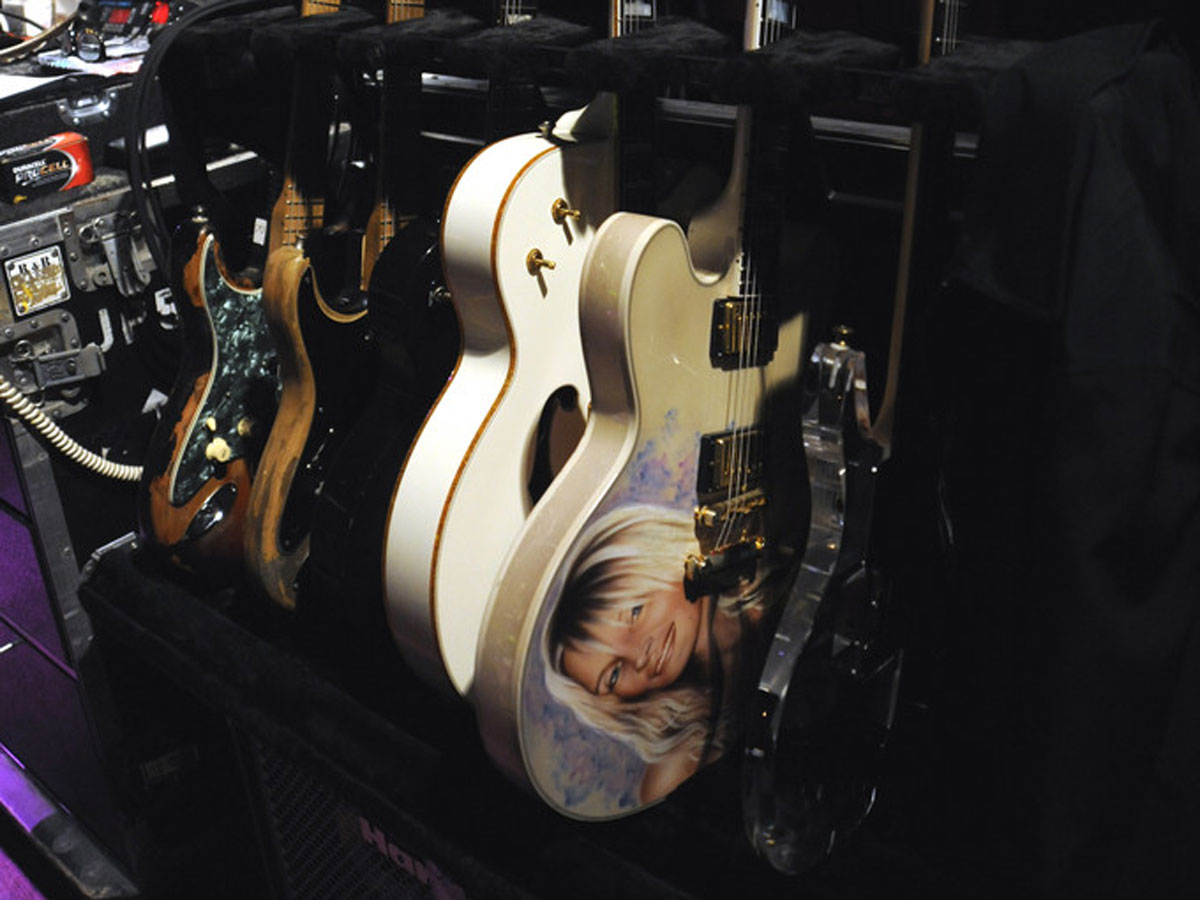
A life in guitars
“The first time I heard a guitar was when my uncle played. He had a homemade instrument - it was shaped like a ukulele but sounded like a guitar - that I remember he used to pull out around the holidays to play Portuguese folk songs on it.
“That was my first exposure to that type of instrument. He let me play it and put my hands on it, and it just felt good. It felt comfortable. Then, later on, I got a Silvertone. The action on that was unbelievable. It had to be a half an inch across the neck. If there was ever a guitar designed to turn you off from playing guitar, it was that one. It hurt so much to play, to have to press down those heavy strings.
"When you have that calling, you do the best with what you’ve got"
“At that point, when you have that calling, you do the best with what you’ve got. That was when I first fell in love with it. Then hearing the teenagers play in their band in the kitchen next door, playing rockabilly stuff, that’s when I first started hearing rock ’n’ roll, hearing it on the radio, and realising that it was pretty much based on one guitar.
"When I started playing in a band, I was with a lot of guys better than I was, and it was a real learning experience. But those guys were seniors, and I was an underclassman, so when they graduated I stepped up. I became the leader of the band after starting out as the new guy.
"I was at Vermont Academy - a boarding school - and it was definitely a place where I could seek some refuge from the tie and sport jacket thing, and the whole regimen of being in a boarding school. Being able to play some rock ’n’ roll was a place to kill time. The rest, as they say, is history.”
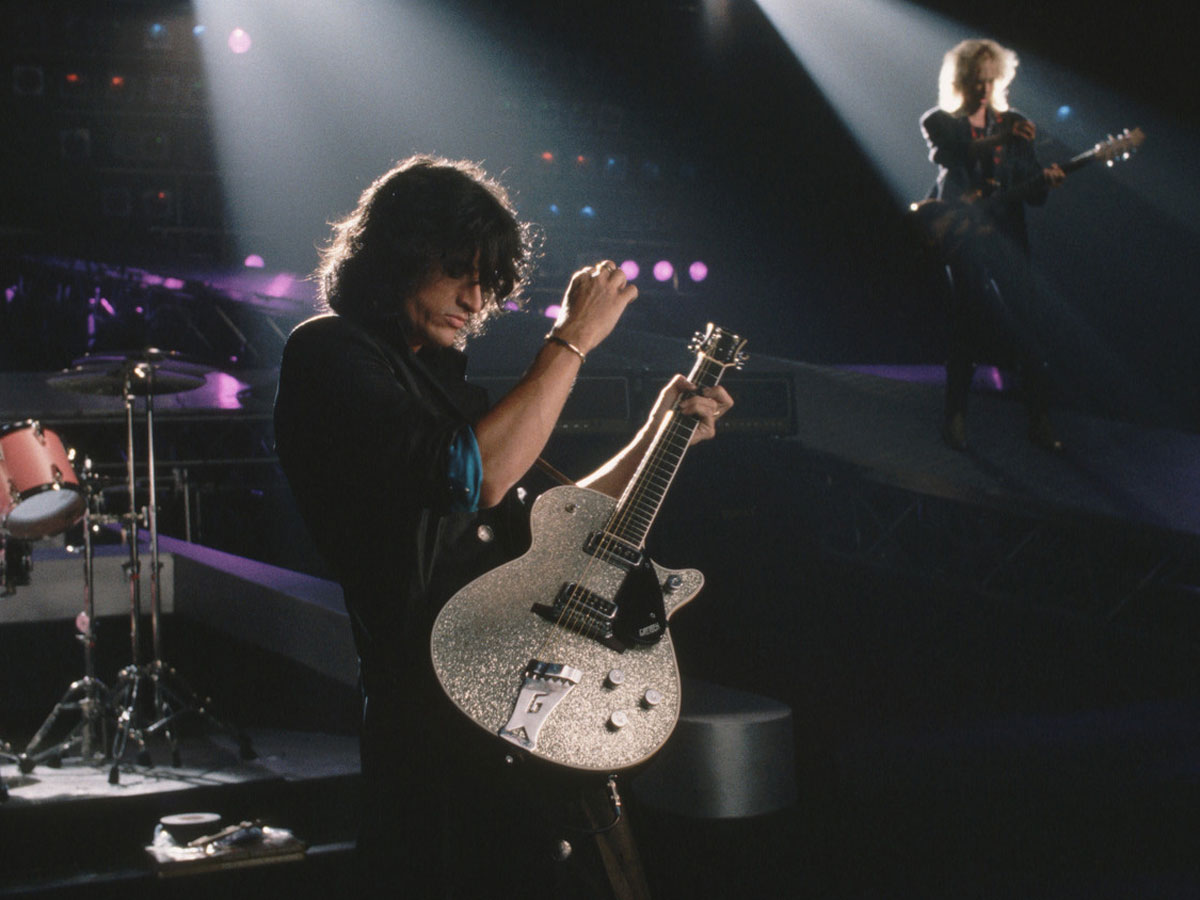
Young Love
“The first guitar I really lusted after was a Gretsch Country Gentleman, like George Harrison played on The Ed Sullivan Show.
"I eventually got a Duo Jet that I used when I played the solo for Dude Looks Like A Lady"
"I was playing these Japanese-styled guitars but my friend got a Country Gent. It took a while for him to get it, but when he first opened that thing up to show me... the smell, the sight, the touch. It was almost like that scene from Spinal Tap. ‘Don’t even look at it!’ I’ve gotten a couple of other Gretsches, but I never got a Country Gent exactly like that one.
“I eventually got a Duo Jet that I used when I played the solo for Dude Looks Like A Lady. I brought that one on the road and played it for at least 10 years. Then it just started to show too much wear. As hard as it is to play and keep in tune, it still has that sound. I play it a lot in the studio.
"Anyway, I think the next guitar that I really, really lusted for was the Les Paul, but before that I had a Starfire IV by Guild. A beautiful one. It’s a beast! I played that in the early days, and then I traded it in for my first Les Paul...”
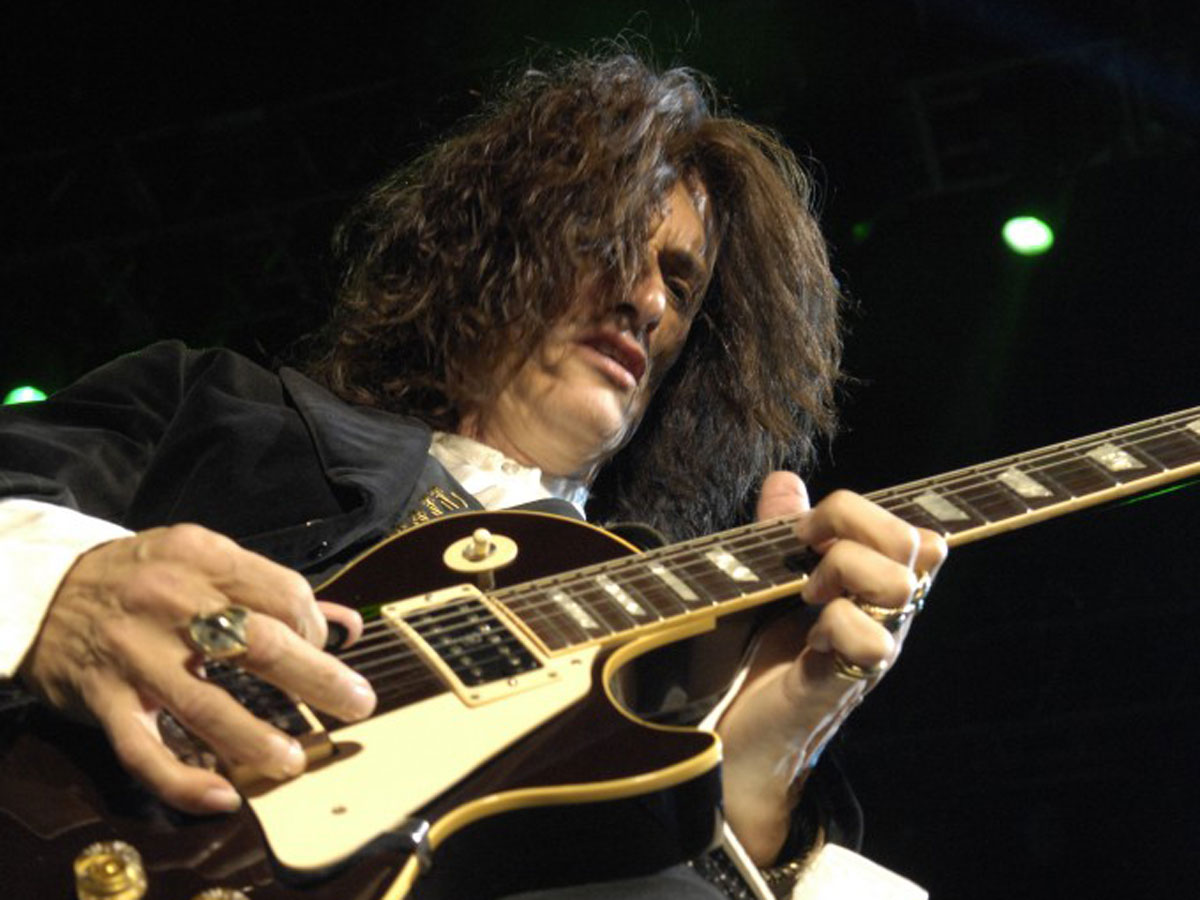
Paul Bearer
“My first Gibson was a Les Paul, a ’68 reissue. I ended up scraping the finish off it to see if there was some kind of maple underneath, but obviously it wasn’t too exceptional. It definitely helped the sound a little bit.
"The Black Beauty and a few others were my main guitars for a long time"
"I really like the P-90 sound, so I gravitated toward Juniors. But the Black Beauty and a few others were my main guitars for a long time. Somewhere along the line there, somebody probably walked into the dressing room and said ‘Hey, listen to this’ and it blew me away, and I ended up using it pretty much exclusively through the 70s.
"I also remember borrowing a three-pickup SG. I really didn’t like it that much. I just didn’t like the balance of it. Once you get used to it, they sound great. Some people just love them, but for me, I didn’t like the way it felt as much as the Les Paul.”
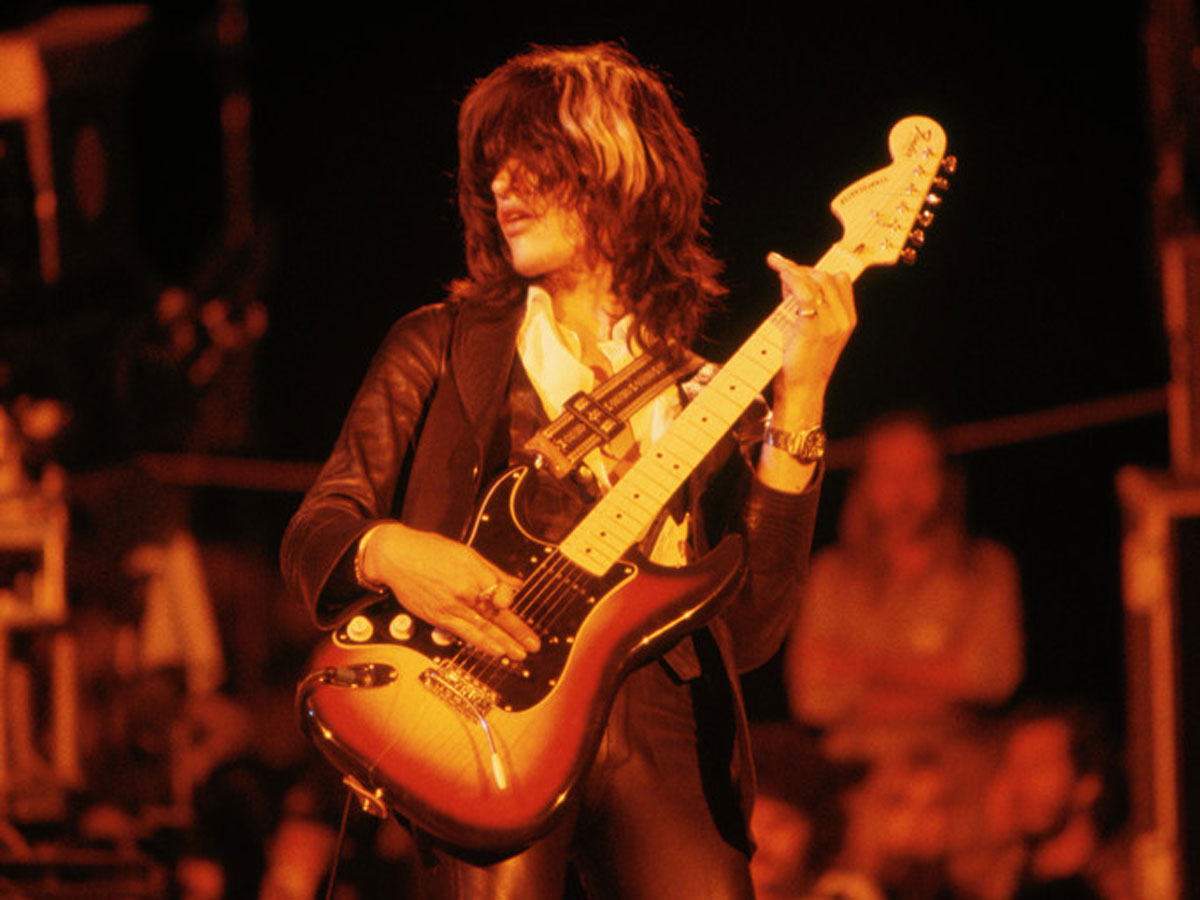
Left Hand Man
“I wasn’t surrounded by a whole music scene. Learning guitar was really whatever I could find out from different people. I was in a very small town, and only a couple of people played guitar.
"If I had started out in a different place and different time, I might be playing the guitar left-handed today"
"I had an interesting conversation with Paul McCartney a couple of months ago, actually. I’m left-handed but I play right-handed because, basically, the instruction record that I had at the time said you fret with your left hand and put the pick in your right hand, so there you go.
"So I asked Paul how it was that he started from the beginning playing left-handed. And he named about three or four artists that were popular when he was starting out - like Slim Whitman - and he said that when he saw that, he felt like it was okay and that was how you did it if you were lefty.
"So, maybe if I had started out in a different place and different time, and seen someone play left-handed at that point, I might be playing the guitar left-handed today.”
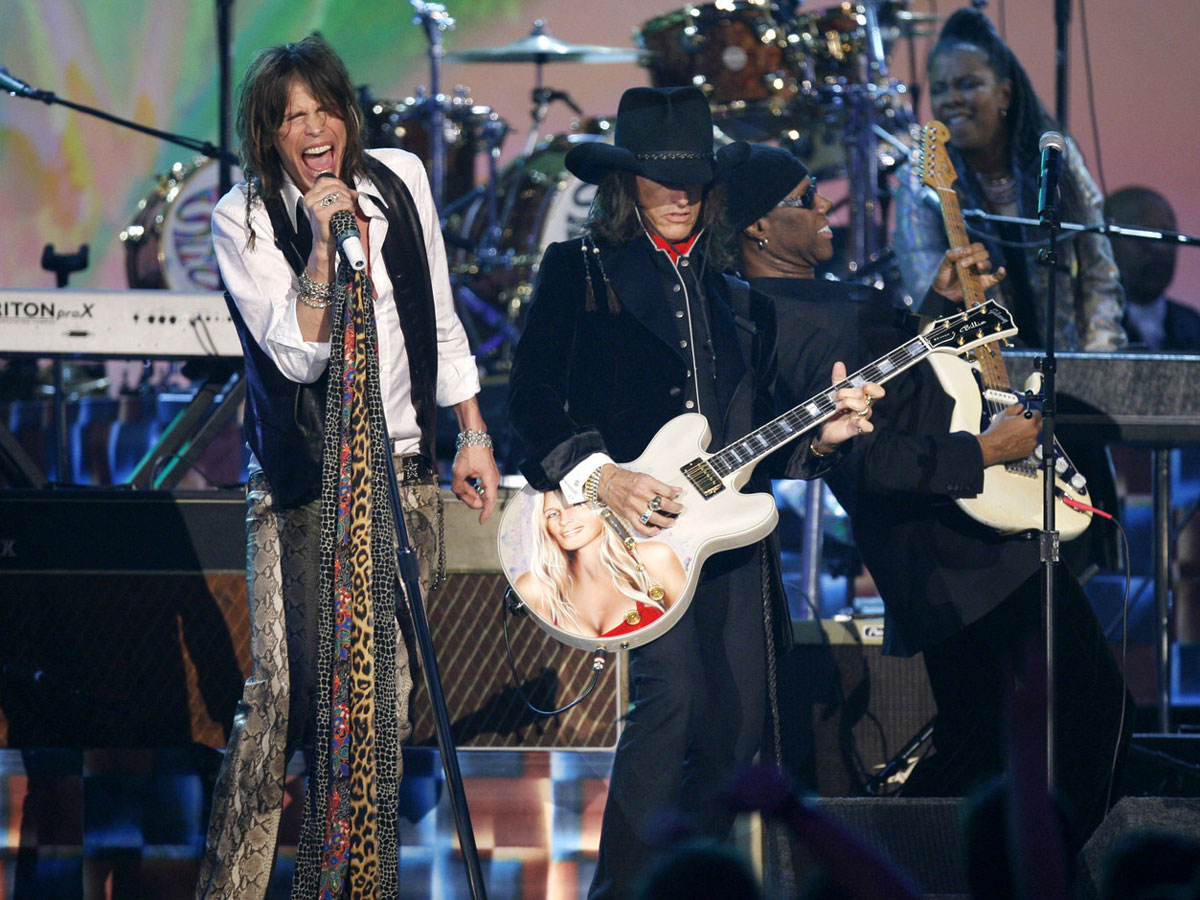
A family affair
“When I met my wife, we were determined not to make the same mistakes we’d both made in the past. We took our time and really became friends first. That was the most important thing, and I think that still remains the most important thing. But I think that the next thing is the importance of keeping your family together. For me, it’s the cost of doing business.
"When we asked the kids if they want to go to school or want to come on the road, they always wanted to go on the road!"
"When I have to go on the road, the most important question for me is how long am I going to be away from the kids, or what’s it going to take to bring them along? They have to be in school, of course. But I think the most important thing is physically being together. That’s always been the paradigm, from the beginning.
"So my wife and I have this foundation, which is the two of us, and then after that raising our kids is key. Really, it’s one of the most important things you can do. For anyone that’s been on the road, you know the cost of bringing extra people with you makes it really tough.
“When we asked the kids if they want to go to school or want to come on the road, they always wanted to go on the road! Our youngest kid wanted to spend the last two years of school near home with his friends, though, so we made whatever adjustments we had to make. And he just graduated from Boston University.
"But being physically close, so that you can see what’s going on, is key, I think, especially in the internet age. You’ve got to give your kids the tools to deal with whatever comes at them.”
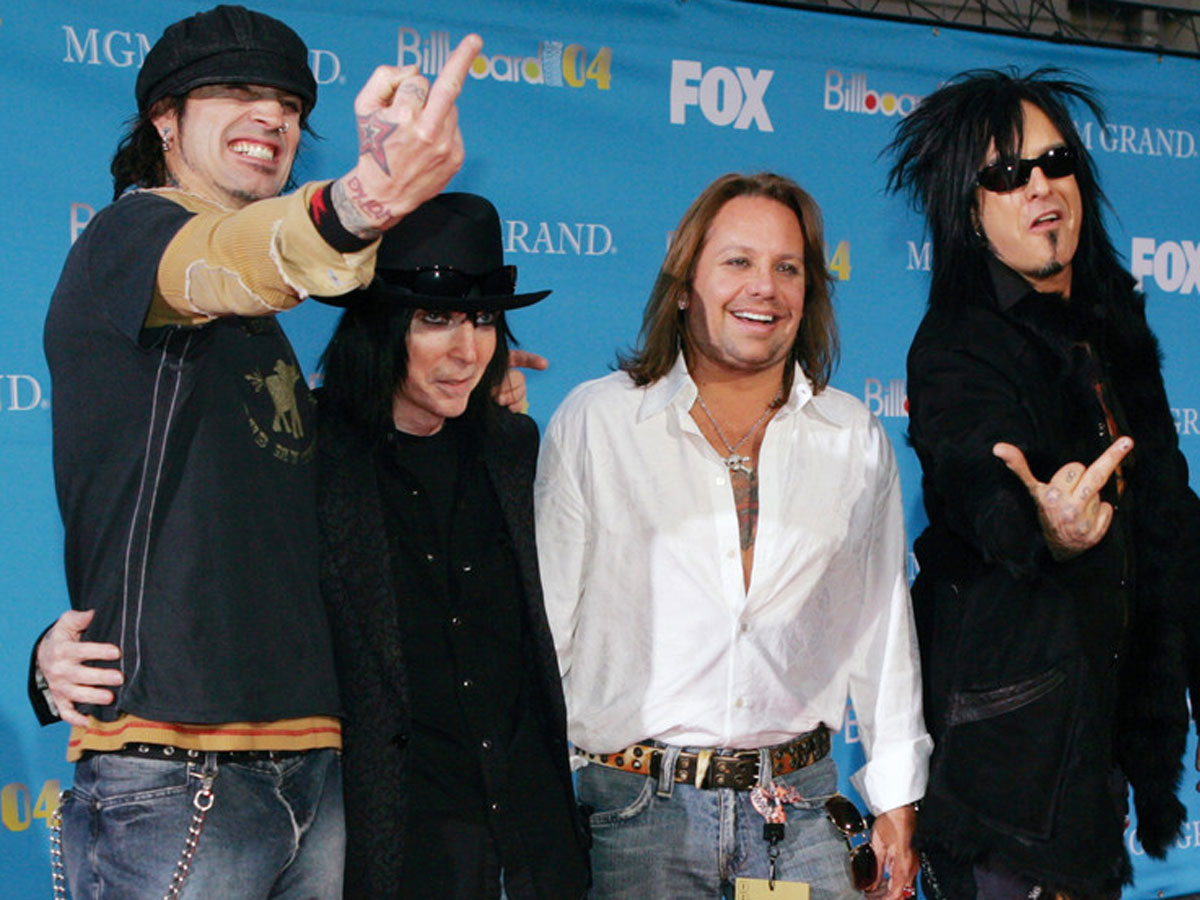
Parental advisory
“There’s a picture I have, when we were on the road with Mötley Crüe, and they’d bring in a stripper pole. They’d set up tents and all that and have strippers backstage every night, for an hour or so.
"There’s a great picture of my son with Mötley Crüe's strippers, and he’s got a cowboy hat with a big 16 on it!"
"So when our son Tony turned 16 we noticed he would disappear for a little while every night. I knew where he was, but we let him go and watch the show.
"It was a little bit more X-rated than we would have liked, but he was 16 and coming of age. And there’s a great picture of him with the strippers, and he’s got a cowboy hat with a big 16 on it. We have that on the wall somewhere in the house. Hey, it’s rock ’n’ roll.”
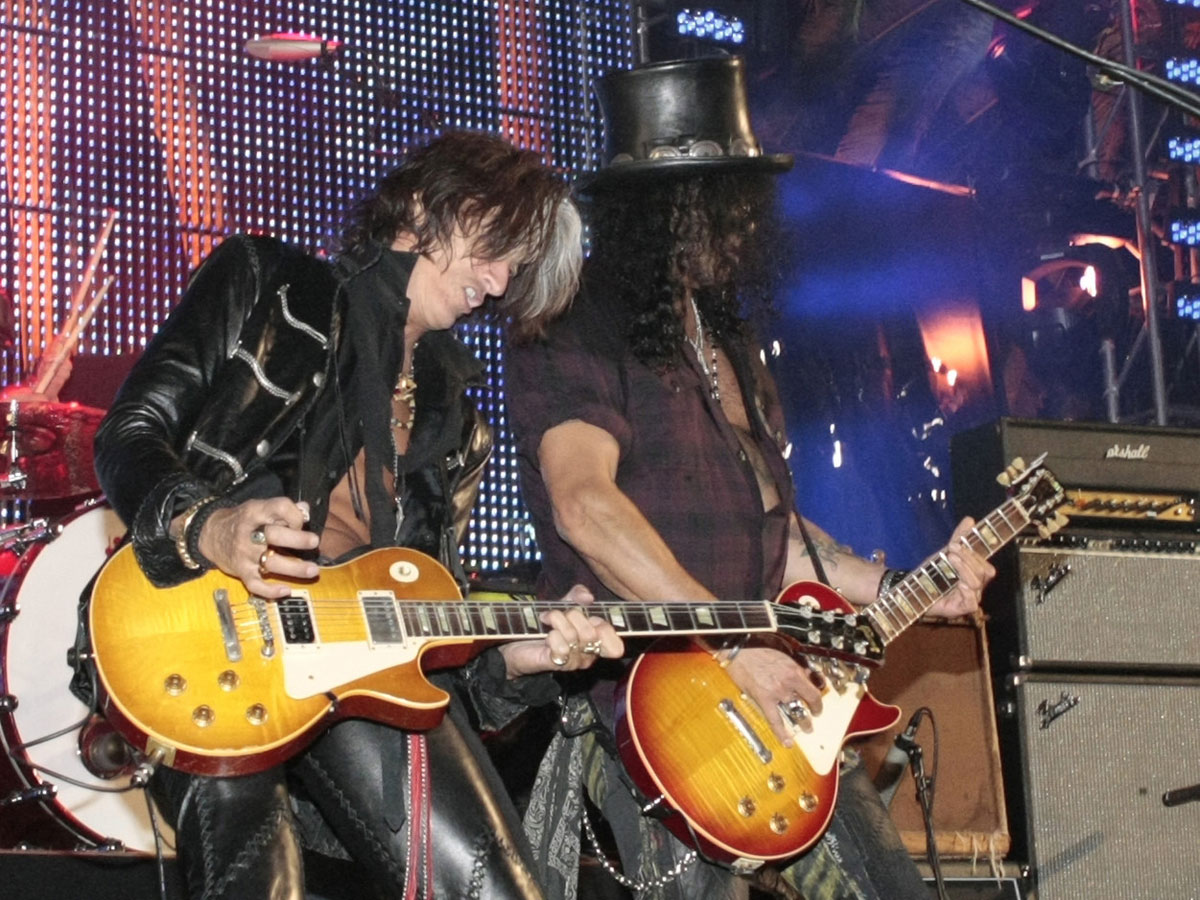
Burst brothers
“After leaving the band [in 1979], cash was tight. I wasn’t using that Les Paul that much because I was using a Strat that I’d put together a lot. I’d put all my other guitars down and pretty much just played that.
"So I sold the Les Paul. It was, ‘goodbye, see you later.’ Then many people had it. And finally Slash had it. I suppose it could have gotten in the way of our friendship, because he used it in a lot of pictures, and I can see why it was hard for him to let go of it.
"It’s one of those rock ’n’ roll legends now. If you read it in a script and go, ‘Nah, that could never happen’"
“Totally by surprise, he gave it back to me. He showed up on my birthday with it. But really, the cool end to the story is that it had actually been stolen from Slash, and he said it showed up in the mail. I asked him about it; whether that really happened or not. Because I wanted to know. It’s just a really cool ending to the story. So the bottom line is that any time he wants to use it, he can use it.
"As it turns out, Gibson made a run of relics and copied the guitar right down to the tee, so I bring one of those on the road with me because that guitar is just too collectible to take any more damage. So the best thing was to have a duplicate made.
“Gibson is making great stuff out of their Custom Shop, but I was surprised how close they were able to replicate it. They got it right down to the feel and the tone. It’s one of those rock ’n’ roll legends now. If you read it in a script and go, ‘Nah, that could never happen’.”
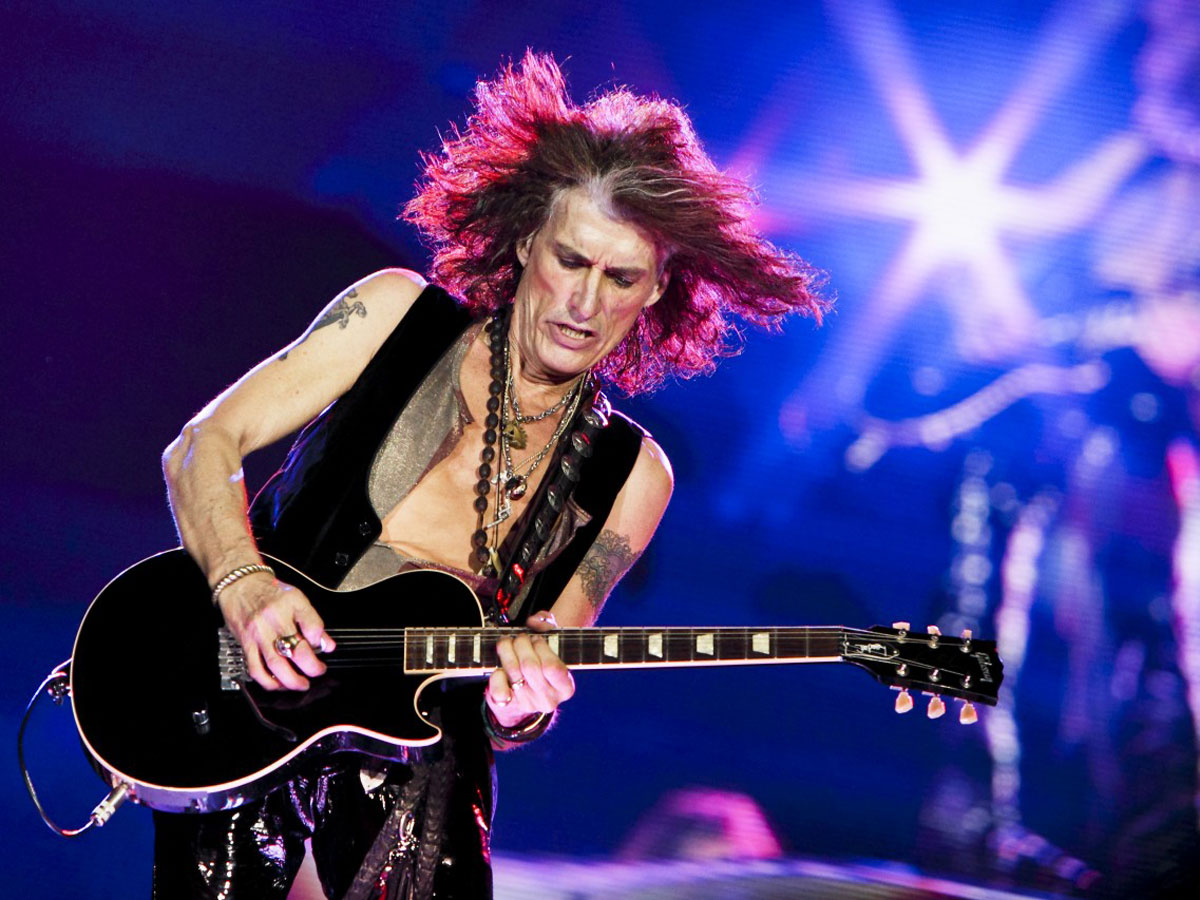
Custom Shopping
Perry’s latest Gibson Custom creation looks simple, but has a few tricks under the hood...
When asked about his favourite guitar at the moment, Perry reveals he’s been working with Gibson to develop a new signature guitar and has fallen in love with a new prototype that the company has sent him: “I have a Les Paul right now that’s a prototype, because we’re talking about doing a signature thing, and I’ve got to say it’s the best of both worlds.
"I love the way a Les Paul feels, but I love the ergonomics of a Strat"
“It’s the best of the Stratocaster and the best of the Les Paul. Because I love the sound of the Les Paul and, ultimately, I love the way a Les Paul feels, but I love the ergonomics of a Strat. I love the whammy bar. So this new guitar I’m playing is a Les Paul from Gibson’s Custom Shop, with one pickup and a vibrato arm on it.
“It’s balanced and works great and stays in tune. And it’s got a [Chandler] Tone X for tone control - it has what looks like a tone knob, but actually when you pull it out it brings the Tone X into action [a 16dB boost with a midrange sweep - Ed]. So you can either set it to a cool tone or get a wah-wah thing out of it. Right now, that guitar gives me a lot of stuff to play with.”
Rocks: My Life In And Out Of Aerosmith by Joe Perry with David Ritz, is out now via Simon & Schuster

